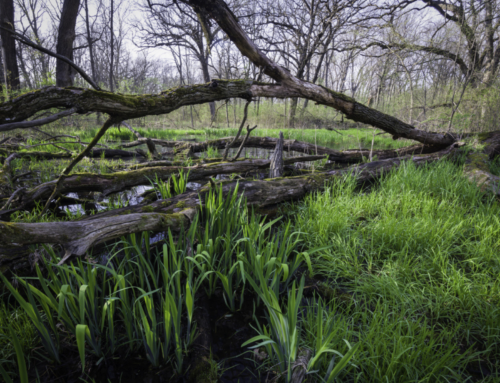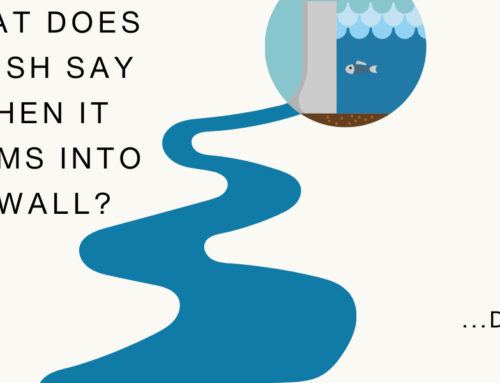February 18, 2020
In response to the request for public comment on the Connecticut Department of Energy and Environmental Protection’s (DEEP) Intent to Reissue the General Permit for the Discharge of Stormwater and Dewatering Wastewaters from Construction Activities (GP), and on behalf of the Connecticut River Conservancy (CRC), please consider the comments below.
The Connecticut River Conservancy is a nonprofit citizen group established in 1952 to advocate for the protection, restoration, and sustainable use of the Connecticut River and its four-state watershed. The GP, which will authorize the discharge of stormwater and dewatering of wastewater in construction sites, will dictate the levels of pollution that runoff into the Connecticut River, its tributaries and ultimately, the Long Island Sound. As such, the parameters delineated in the GP have direct implication for the health of species that live in the river, as well as those who use it. It is therefore imperative that DEEP adopt a GP that reduces runoff to ensure that Connecticut water bodies meet the basic water quality standards for the state. To do so, we ask that DEEP consider the following suggestions:
- DEEP mandates adherence with the 2004 Connecticut Stormwater Quality Manual and the 2002 Connecticut Guidelines for Soil Erosion throughout the GP. Such reference to the manuals allows for general interpretation of the manuals, which may allow registrants to override established best management practices with their own judgement. DEEP should specify sections of the manuals when referencing them so as to avoid ambiguity. Additionally, both manuals were published over 15 years ago and therefore are in need of updating. For example, both manuals discuss climate as a factor for consideration for developers and engineers, but neither mentions how a rapidly changing climate may be accounted for in planning or design practices. We consider this especially crucial seeing as the sandy soil found in Connecticut River Valley can be very susceptible to wind erosion as well as increased runoff from precipitation. Where the manuals do not provide up-to-date guidance, DEEP should direct engineers and developers to the appropriate sources or add updates to these manuals to integrate recent studies and best practices.
- Appendix A, which outlines the ways in which a registrant may comply with requirements for protecting endangered and threatened species, extends the determination from DEEP’s Wildlife Division from one year to two years. We ask that DEEP clarify the reasons for extending the period of determination. As the climate crisis intensifies, the geographic range
of plant and animal species is shifting at an increasing rate.1 Accordingly, the extension of the period of determination could result in activity in the area of species not included in the initial determination or a mitigation plan that does not fully account for species associated with the habitat. The Natural Diversity Database (NDDB) maps are intended to act as a screening tool for construction projects and should prevent delays in the registration process.
Appendix I outlines requirements for solar array projects. Solar arrays act as impervious cover and increase runoff, erosion and sedimentation, thereby threatening the health of Connecticut’s water bodies. While solar energy is an important aspect of reaching the state’s climate change goals, it is critical that the impact of solar operations on runoff are properly accounted for and mitigated.
- Section 1 of Appendix I considers solar arrays as impervious cover for the purpose of Water Quality Volume (WQV) calculations. In specifically naming WQV calculations, DEEP precludes the consideration of solar arrays as impervious cover in other calculations. Accordingly, DEEP should amend this section to state that solar arrays are considered impervious cover in all contexts, which would cover other considerations such as groundwater recharge.
- Under Section 1, the GP requires that solar arrays allow for the growth and maintenance of vegetation beneath and between the panels. DEEP should strengthen this section by requiring vegetative cover at 90% uniform coverage. Such requirements have been implemented in other states and represent a commitment to maintaining the health of soils and waters of the state.2
- Section 1(c) references Figure 1 for guidance on appropriate vegetation. This language should be substituted to convey that a variety of vegetative cover can be used around the solar arrays. Additionally, the GP should explicitly prohibit the use of chemical pesticides and herbicides and encourage registrants to plant native plant species that will support a healthy ecosystem. This includes maintaining a meadow condition, introducing plants that support pollinators and minimizing mowing where possible.
- Section 3(a) stipulates that “the permittee shall conduct a hydrologic analysis that: (a) Evaluates 2, 25, 50 and 100-year storm post-construction stormwater flows.” With increases in precipitation due to climate change,3 DEEP should consider requirements for analysis that includes additional recurrence intervals such as 200 and 500 year storms.
Thank you for your consideration of these comments. I can be reached at kwentling@ctriver.org or (860) 704-0057.
Kelsey Wentling
1 https://www.ucsusa.org/resources/plant-and-animal-range-shifts
2 https://www.kennedyjenks.com/2017/11/10/a-rainy-day-at-a-solar-farm/
3 https://archive.epa.gov/epa/climate-impacts/climate-impacts-northeast.html







